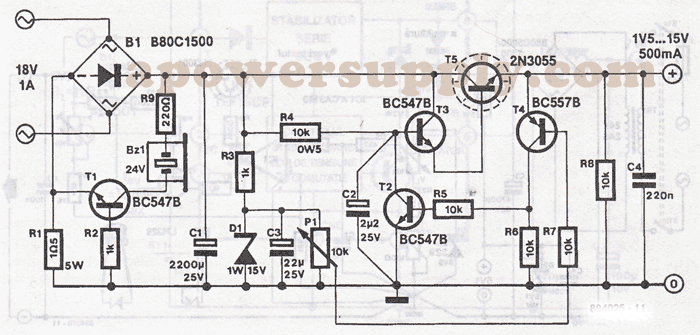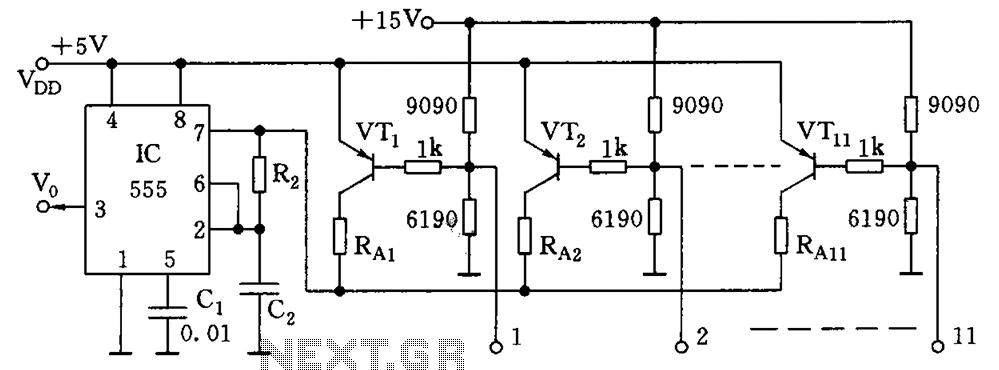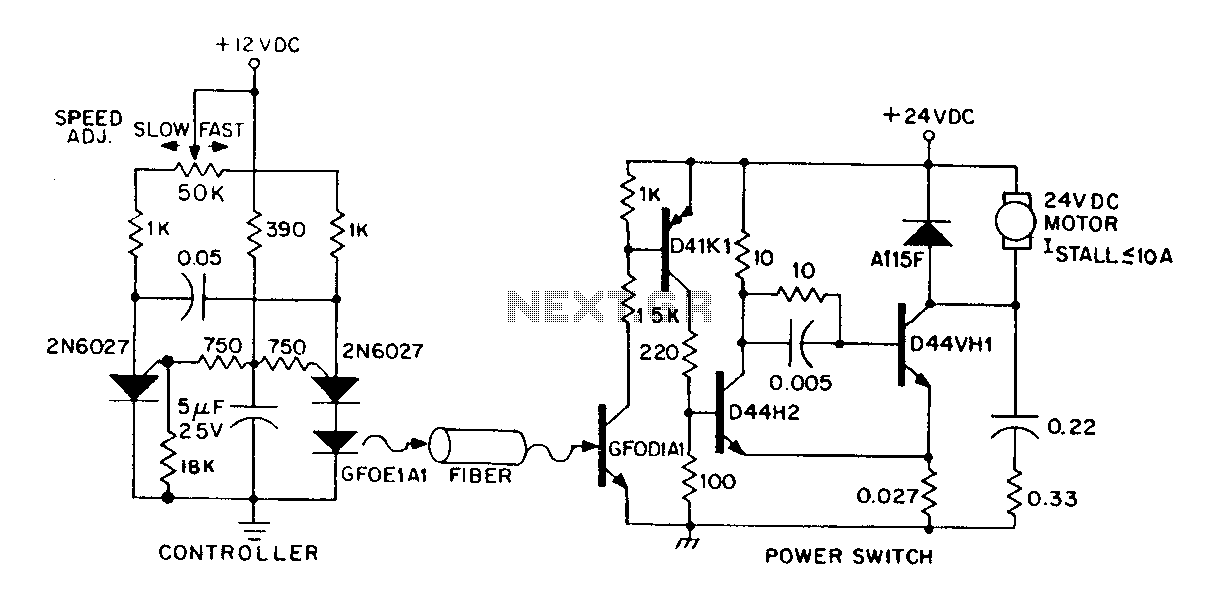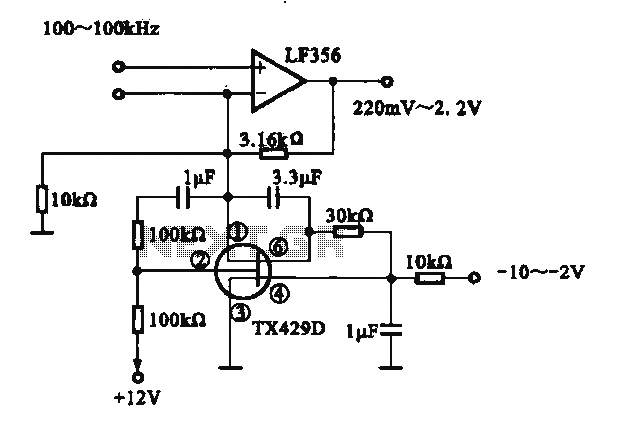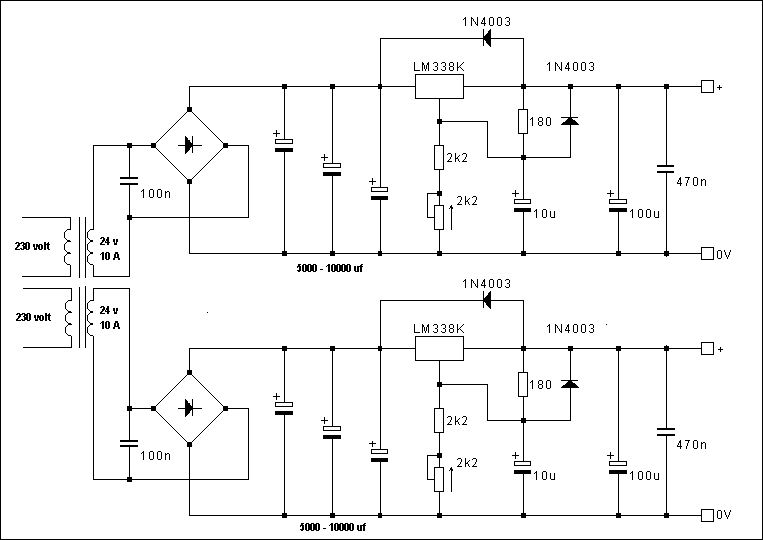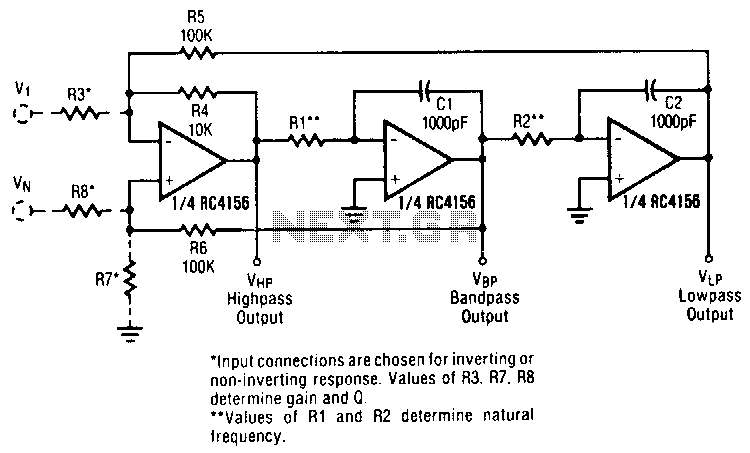
Variable PSU

A variable power supply with adjustable voltage and current outputs utilizes the L200 regulator. This power supply features independent voltage and current limits. The mains transformer is rated at 12 volts with a 2 amp secondary output, while the primary winding must match the electricity supply in the user's country, which is 240V in the UK. A 10k potentiometer adjusts the voltage output from approximately 3 to 15 volts, and a 47-ohm potentiometer sets the current limit, ranging from a minimum of 10 mA to a maximum of 2 amps. Activating the current limit results in a reduction of the output voltage to zero.
The variable power supply circuit employs the L200 voltage regulator, known for its versatility and reliability in providing stable output. The L200 device allows for both voltage and current regulation, making it suitable for various applications that require precise power delivery. The circuit design includes a mains transformer that steps down the high voltage from the AC mains to a lower voltage suitable for the L200 regulator. The transformer has a secondary winding rated at 12 volts and 2 amps, which is adequate for the power requirements of the circuit.
The control elements consist of two adjustable resistors (potentiometers). The first, a 10k ohm potentiometer, is responsible for setting the output voltage within a range of 3 to 15 volts. This range allows for flexibility in powering different electronic devices that may require varying voltage levels. The second potentiometer, with a resistance of 47 ohms, is used to limit the output current. This current limiting feature is critical for protecting both the power supply and the connected load from excessive current draw. The adjustable current limit can be set from a minimum of 10 mA to a maximum of 2 amps, ensuring that sensitive components are not damaged by overcurrent conditions.
When the load attempts to draw more current than the set limit, the power supply automatically reduces the output voltage to zero. This feature prevents potential damage to the power supply and the connected load, providing an essential safeguard in the design. The overall configuration of the circuit ensures that it operates efficiently and safely, making it a valuable tool for testing and powering a variety of electronic projects.A variable power supply with adjustable voltage and current outputs made with the L200 regulator. Using the versatile L200 voltage regulator, this power supply has independent voltage and current limits. The mains transformer has a 12volt, 2 amp rated secondary, the primary winding should equal the electricity supply in your country, which is 240V
here in the UK. The 10k control is adjusts voltage output from about 3 to 15 volts, and the 47 ohm control is the current limit. This is 10mA minimum and 2 amp maximum. Reaching the current limit will reduce the output voltage to zero. 🔗 External reference
The variable power supply circuit employs the L200 voltage regulator, known for its versatility and reliability in providing stable output. The L200 device allows for both voltage and current regulation, making it suitable for various applications that require precise power delivery. The circuit design includes a mains transformer that steps down the high voltage from the AC mains to a lower voltage suitable for the L200 regulator. The transformer has a secondary winding rated at 12 volts and 2 amps, which is adequate for the power requirements of the circuit.
The control elements consist of two adjustable resistors (potentiometers). The first, a 10k ohm potentiometer, is responsible for setting the output voltage within a range of 3 to 15 volts. This range allows for flexibility in powering different electronic devices that may require varying voltage levels. The second potentiometer, with a resistance of 47 ohms, is used to limit the output current. This current limiting feature is critical for protecting both the power supply and the connected load from excessive current draw. The adjustable current limit can be set from a minimum of 10 mA to a maximum of 2 amps, ensuring that sensitive components are not damaged by overcurrent conditions.
When the load attempts to draw more current than the set limit, the power supply automatically reduces the output voltage to zero. This feature prevents potential damage to the power supply and the connected load, providing an essential safeguard in the design. The overall configuration of the circuit ensures that it operates efficiently and safely, making it a valuable tool for testing and powering a variety of electronic projects.A variable power supply with adjustable voltage and current outputs made with the L200 regulator. Using the versatile L200 voltage regulator, this power supply has independent voltage and current limits. The mains transformer has a 12volt, 2 amp rated secondary, the primary winding should equal the electricity supply in your country, which is 240V
here in the UK. The 10k control is adjusts voltage output from about 3 to 15 volts, and the 47 ohm control is the current limit. This is 10mA minimum and 2 amp maximum. Reaching the current limit will reduce the output voltage to zero. 🔗 External reference
